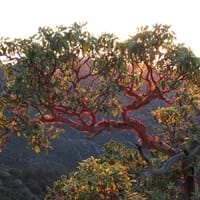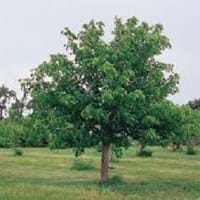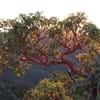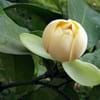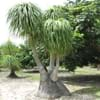Life Span
Perennial
Perennial
Origin
Southwestern United States, Mexico
United States, Mid-Atlantic United States, Southeastern United States, Central United States
Types
Not Available
Not Available
Habitat
Woodlands
Forest edges, Forest margins, Tropical regions
USDA Hardiness Zone
7-10
3-7
Sunset Zone
8, 9, 10, 11, 12, 13, 14, 15, 16, 17, 18, 19, 20, 21, 22, 23, 24
Not Available
Habit
Twisted/Contorted
Oval or Rounded
Flower Color
White, Light Pink, Ivory
Light Yellow, Yellow green, Ivory
Flower Color Modifier
Bicolor
Bicolor
Fruit Color
Red, Coral, Orange Red, Dark Salmon
Tan, Sienna
Leaf Color in Spring
Light Green
Green, Dark Green
Leaf Color in Summer
Green, Light Green
Dark Green
Leaf Color in Fall
Green, Light Green
Orange, Tan
Leaf Color in Winter
Green, Light Green, Dark Green
Not Available
Plant Season
Spring, Summer, Fall, Winter
Spring, Summer, Fall
Sunlight
Full Sun, Partial Sun
Full Sun, Partial Sun
Type of Soil
Clay, Loam
Clay, Loam
The pH of Soil
Neutral, Alkaline
Acidic, Neutral
Soil Drainage
Well drained
Average
Bloom Time
Spring, Late Spring, Early Summer
Late Spring
Tolerances
Drought
Not Available
Where to Plant?
Ground
Ground
How to Plant?
Stem Cutting
Seedlings
Plant Maintenance
Medium
Medium
Watering Requirements
Requires regular watering
Average Water Needs, Keep the ground moist but not water-logged
In Summer
Lots of watering
Lots of watering
In Spring
Moderate
Moderate
In Winter
Average Water
Average Water
Soil pH
Neutral, Alkaline
Acidic, Neutral
Soil Type
Clay, Loam
Clay, Loam
Soil Drainage Capacity
Well drained
Average
Sun Exposure
Full Sun, Partial Sun
Full Sun, Partial Sun
Pruning
Remove dead or diseased plant parts
Remove damaged leaves, Remove dead branches, Remove dead leaves
Fertilizers
All-Purpose Liquid Fertilizer
All-Purpose Liquid Fertilizer
Pests and Diseases
Red blotch
Red blotch
Plant Tolerance
Drought
Drought
Flower Petal Number
Single
Not Available
Foliage Texture
Medium
Coarse
Foliage Sheen
Glossy
Matte
Allergy
Not Available
Not Available
Aesthetic Uses
Showy Purposes
Not Used For Aesthetic Purpose
Beauty Benefits
Not Available
Not Available
Environmental Uses
Air purification
Air purification
Medicinal Uses
Not Available
Asthma, Cough, Intestinal irritations, Rheumatism
Part of Plant Used
Whole plant
Fruits
Other Uses
Used as Ornamental plant, Used for woodware
Culinary use
Used As Indoor Plant
No
No
Used As Outdoor Plant
Yes
Yes
Garden Design
Feature Plant, Foundation, Mixed Border, Rock Garden / Wall, Shade Trees
Screening / Wind Break, Shade Trees
Botanical Name
ARBUTUS arizonica
AESCULUS glabra
Common Name
Arizona Madrone
Ohio Buckeye
In Hindi
Arizona Madrone
ओहियो बकेये
In German
Arizona Madrone
Ohio buckeye
In French
Arizona Madrone
marronnier de l'Ohio
In Spanish
Arizona MADRONE
Ohio castaño de indias
In Greek
Αριζόνα Madrone
Οχάιο Buckeye
In Portuguese
Arizona Madrone
Ohio Buckeye
In Polish
Arizona Madrone
Ohio kasztan
In Latin
Arizona Madrone
Ohio buckeye
Phylum
Magnoliophyta
Magnoliophyta
Class
Magnoliopsida
Magnoliopsida
Order
Ericales
Sapindales
Family
Ericaceae
Hippocastanaceae
Clade
Angiosperms, Asterids, Eudicots
Angiosperms, Eudicots, Rosids
Tribe
Not Available
Not Available
Subfamily
Not Available
Hippocastanoideae
Number of Species
Not Available
Properties of Arizona Madrone and Ohio Buckeye
Wondering what are the properties of Arizona Madrone and Ohio Buckeye? We provide you with everything About Arizona Madrone and Ohio Buckeye. Arizona Madrone doesn't have thorns and Ohio Buckeye doesn't have thorns. Also Arizona Madrone does not have fragrant flowers. Arizona Madrone has allergic reactions like Not Available and Ohio Buckeye has allergic reactions like Not Available. Compare all the properties and characteristics of these two plants. Find out which of these plant can be used as indoor plant. If you are interested to decorate your house and garden, find out aesthetic uses, compare them and select the plant which will beautify your surrounding. Along with beautification, try comparing medicinal and edible uses of Arizona Madrone and Ohio Buckeye and you can choose the plant having best and most benefits.
Season and Care of Arizona Madrone and Ohio Buckeye
Season and care of Arizona Madrone and Ohio Buckeye is important to know. While considering everything about Arizona Madrone and Ohio Buckeye Care, growing season is an essential factor. Arizona Madrone season is Spring, Summer, Fall and Winter and Ohio Buckeye season is Spring, Summer, Fall and Winter. The type of soil for Arizona Madrone is Clay, Loam and for Ohio Buckeye is Clay, Loam while the PH of soil for Arizona Madrone is Neutral, Alkaline and for Ohio Buckeye is Acidic, Neutral.
Arizona Madrone and Ohio Buckeye Physical Information
Arizona Madrone and Ohio Buckeye physical information is very important for comparison. Arizona Madrone height is 550.00 cm and width 610.00 cm whereas Ohio Buckeye height is 910.00 cm and width 760.00 cm. The color specification of Arizona Madrone and Ohio Buckeye are as follows:
Arizona Madrone flower color: White, Light Pink and Ivory
Arizona Madrone leaf color: Light Green
Ohio Buckeye flower color: Light Yellow, Yellow green and Ivory
- Ohio Buckeye leaf color: Green and Dark Green
Care of Arizona Madrone and Ohio Buckeye
Care of Arizona Madrone and Ohio Buckeye include pruning, fertilizers, watering etc. Arizona Madrone pruning is done Remove dead or diseased plant parts and Ohio Buckeye pruning is done Remove damaged leaves, Remove dead branches and Remove dead leaves. In summer Arizona Madrone needs Lots of watering and in winter, it needs Average Water. Whereas, in summer Ohio Buckeye needs Lots of watering and in winter, it needs Average Water.
